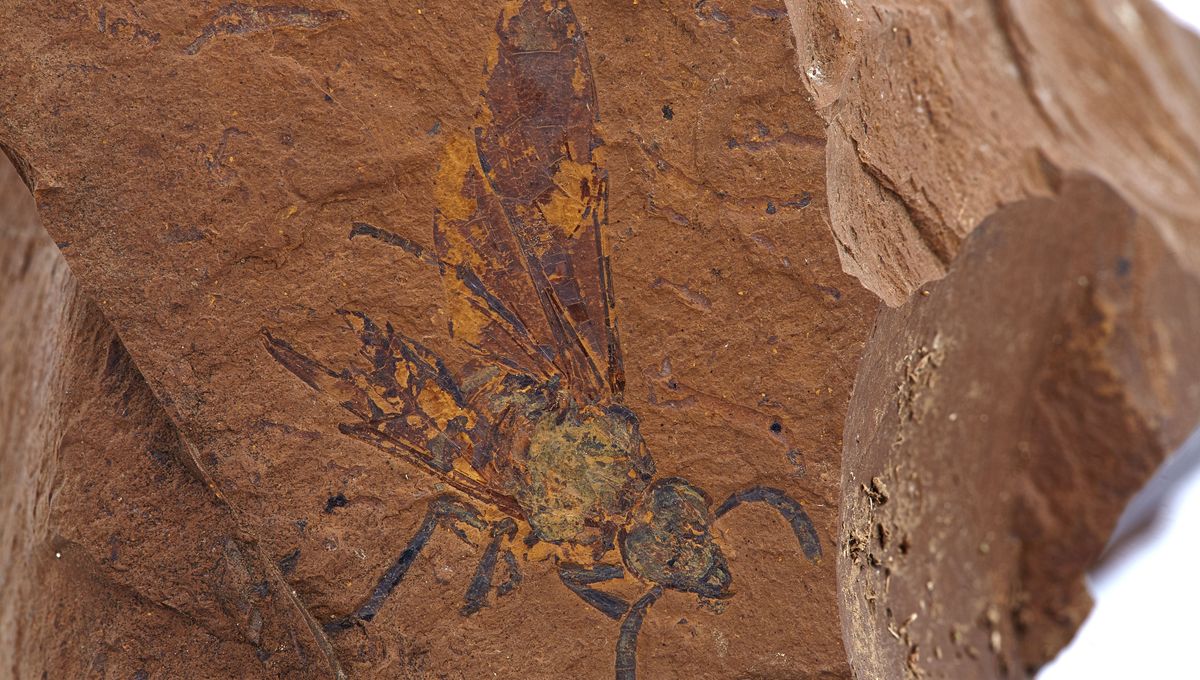
Researchers have discovered a brand new species of sawfly from an amazingly preserved fossil found in Australia. This is a great discovery – but we need to remember that sawflies are not flies at all.
The new species is long extinct but would have been flying around what is now Australia in the Miocene Period. It is thought that the sawfly is between 11 and 16 million years old and is the first of its kind discovered in Australia. It was first found by a team in 2018 on McGraths Flat, an oxbow lake deposit in New South Wales.
Sawflies are actually a type of wasp, however, they look a little unusual and do not possess the “wasp waist” seen in other more common members of the wasp family. Instead, sawflies have saw-like ovipositors that are used to lay eggs.
The new species has been named Baladi warru. “Baladi” means “saw” and “warru” means “wasp” in the language of the Wiradjuri – the largest Aboriginal group in New South Wales. The name was chosen with the approval of the Mudgee Local Aboriginal Land Council, to honor the Traditional Owners of the land where the fossil was discovered.
By looking closely at the veins running through the wings of the fossil, as well as a part of the head called the clypeus, the team were able to determine that it was a new species that belongs to the subfamily Perginae and is closely related to the Australian genera Cerealces and Xyloperga, which contain species living today.
By comparing the new species to other living taxa and performing DNA analysis, the team worked out how closely related the new fossil is to today’s sawfly species.
“We looked at the fossil and its morphology and then put this information together with molecular and morphological data from a wide sample of current sawfly species. This helped us decipher the fossil’s placement in the sawfly tree of life,” said CSIRO research scientist Dr Juanita Rodriguez in a statement.
The age of the fossil even helped the scientists work out when the entire sawfly lineage was established.
“We used the fossil’s age and its placement to establish that sawflies originated in the Cretaceous Period, around 100 million years ago, which means their ancient ancestors lived in Gondwana. When this supercontinent split up, sawflies ended up distributed in Australia and South America,” Rodriguez added.
There were even pollen grains on top of the sawflies’ heads and mouthparts, this is incredibly unusual as the preservation of the fossil is so good that the researchers can tell what the adult sawfly was feeding on. The pollen belongs to a plant called Quintiniapollis psilatospora. The team think the larvae would have fed on toxic plants called Myrtaceae, but had specialist mouthparts or other digestive processes to protect them from the toxic oils within the plants’ structures.
“They eat the leaves of Myrtaceae – a family of woody plants that includes eucalypts – because they have mouthparts with which they can separate toxic oils or a chemical detoxification system inside their gut when feeding on myrtaceous leaves. This enables the larvae, sometimes called spitfires, to use the oils as a defensive weapon,” said University of Canberra palaeontologist and CSIRO visiting scientist, Dr Michael Frese.
Even though this sawfly species is not extant, the information provided by the fossil can help today’s sawfly species and even other pollinating insects.
“Although this particular species, Baladi warru, has been extinct for millions of years, it provides information on native pollinators so we can understand their evolution and impact in the present,” Frese added.
The paper is published in Systematic Entomology.
Source Link: 16-Million-Year-Old Sawfly Fossil Is First-Of-Its-Kind Ever Discovered